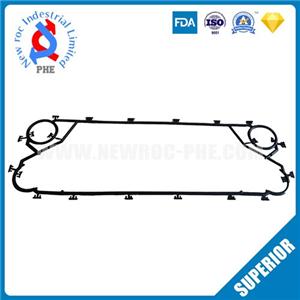Calculation of average temperature difference of plate heat exchanger
Calculation of average temperature difference of plate heat exchanger
Recently, some customers have asked our customer service about how the average temperature difference of plate heat exchangers can be calculated. Let’s take a look today!
1. Calculate the unknown temperature or flow rate, calculate the unknown temperature or flow rate through the heat balance equation, and calculate the heat load Q at the same time. Choose the corresponding plate heat exchanger
2. Choose a suitable heat exchanger plate model, and choose a suitable heat exchanger plate model according to the amount of heat exchange and flow.
The selection of the plate model of the heat exchanger should be determined according to the specific working conditions. When the flow rate is large and the pressure drop is low, the heat exchanger plate type with lower resistance should be selected; otherwise, the heat exchanger plate type with a slightly larger resistance coefficient can be selected.
3. Estimate the heat exchange area of the plate heat exchanger, and calculate the approximate heat exchange area of the plate heat exchanger based on the heat exchange amount.
4. Select the process flow and channel number of the plate heat exchanger, initially select the cold side and hot side fluid process and channel number of the plate heat exchanger, and calculate the flow rate from this.
5. Find the average temperature difference between the two sides of the plate heat exchanger.
6. Calculate the convective heat transfer coefficient and total heat transfer coefficient of the plate heat exchanger, first obtain the convective heat transfer coefficients of the cold and hot fluids respectively, and then calculate the total heat transfer coefficient.
7. Calculate the heat exchange area required by the plate heat exchanger.
8. Calculate the heat exchange area of the plate heat exchanger.
9. Check the pressure drop of the plate heat exchanger. The allowable pressure drop often becomes a restrictive factor in the design of the plate heat exchanger. However, the design always requires sufficient allowable pressure drop. If the relationship between heat transfer load, flow rate and allowable pressure drop cannot be coordinated no matter how the process layout is changed, only inefficient design schemes can be made. If in the design, the satisfactory design scheme has not been obtained, you can consider changing the plate type of the heat exchanger.




